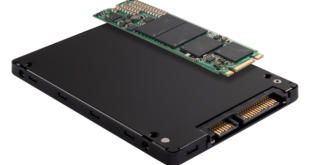
Just over a year ago, Qualcomm announced that it would throw its hat into the server market with a 24-core server processor built on its own custom ARM architecture. Even at the time, we knew the 24-core chip was just a prototype, but it’s still surprising to see Qualcomm going all-in with a 48-core chip built on 10nm process technology and scheduled to launch in 2017. The new chip family is the Qualcomm Centriq 2400 with up to 48 cores, all based on the Qualcomm Falkor CPU.
“The Qualcomm Centriq 2400 series processors will drive high performance, power efficient ARM-based servers from concept to reality,” said Anand Chandrasekher, senior vice president and general manager, Qualcomm Datacenter Technologies, Inc. “Qualcomm requires the leading edge of integrated circuit technology to deliver high performance at low power for the newest premium smartphones. We are first in 10nm IC technology for mobile, and leveraging our expertise in ARM processors and system on chip design, we are the first with our Qualcomm Centriq family of server processors to bring the leading edge to the datacenter.”
An earlier 24-core prototype Centriq.
Qualcomm isn’t releasing any technical information or performance data on its new chip yet, so it’s difficult to know how the chip will compare with its x86 competitors. Even if we assume competitive performance, however, Qualcomm is facing a rocky road to widespread commercial deployment.
Qualcomm’s steep climb
Let’s get a few things out of the way first. If you were looking for a company with the chops to launch a major server part based on ARM, Qualcomm would be on the short list of companies that could even pull it off. It moves enough mobile chips to command foundry attention for its data center efforts, it has money to invest in an effort of this sort, it has established itself as a design firm that can build custom cores, and its cash reserves will allow it to challenge Intel in ways AMD simply can’t match. So far, so good.
But saying that Qualcomm has the best chance to introduce ARM servers that could seriously challenge Intel isn’t the same as saying Qualcomm’s ARM servers will challenge Intel, and the devil is going to be very much in the details. AMD’s Seattle launch of its own hardware was delayed partly because the ARM software ecosystem wasn’t mature enough to build a competitive product until early this year, and other vendors that have fielded ARM-based servers, like Calxeda, have closed their doors. AppliedMicro hasn’t announced any major customers, and Cavium only recently began shipping hardware in volume. AMD, meanwhile, has shifted ARM hardware entirely to the back burner. At a recent Credit Suisse Technology conference, AMD CEO Lisa Su was asked to give an update on the company’s ARM roadmap. She responded:
So, from an ARM standpoint, we believe the ARM architecture is certainly important in certain market segments. From our view, we offer ARM as part of our custom roadmap. From a standard product roadmap, though, all of our eggs are in the x86 basket, and the point is there is just so much TAM for us to address with x86 and GPUs that’s where we’re focusing the business.
The long and short of this is that K12 may not technically be dead, but AMD clearly isn’t burning any effort to bring the chip to market, either. Based on current server trends, that’s a very smart bet. From the low-power cloud play that early ARM players envisioned to challenging Intel in upper-end data centers, none of the existing vendors have had much luck sparking a genuine competitive position. Heck, there’s more signs of life in IBM’s OpenPOWER initiative, and I wouldn’t have taken that bet when IBM announced it several years ago.
If any company is going to make ARM servers work, it’ll be Qualcomm, but the company has a heavy lift before it can turn that particular dream into reality. We’ll see in the back half of 2017 whether there are any legs on the idea or not. By then we should also have some concrete data on AMD’s plans for Zen as a server CPU, and a better understanding of how that chip will compete as well.
 #Bizwhiznetwork.com Innovation ΛI |Technology News
#Bizwhiznetwork.com Innovation ΛI |Technology News




